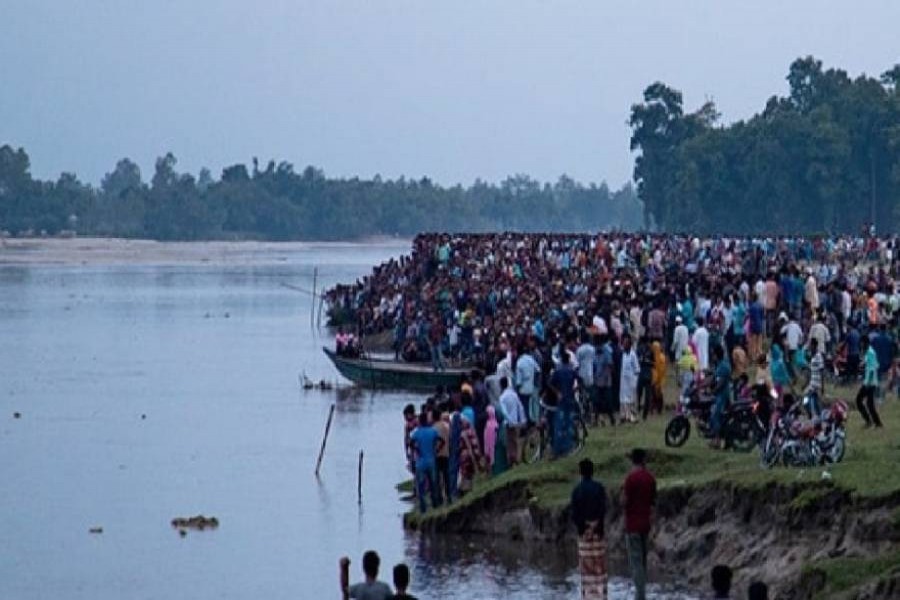The death toll from Sunday's trawler capsize in the Karatoa river at Boda Upazila of Panchagarh district reached 68 at the time of submission of this piece of leader. Some 34 people might still be missing, fire service personnel engaged in the rescue operation reportedly told the media. But how many people were exactly on the boat and how many are missing are still a matter of guesswork as there is no system to record the number of passengers who travel by boats or ferries in these remote parts of the country. However, so far as eyewitness accounts go, the ill-fated boat was carrying around 150 passengers (most of them Hindu devotees) on their way to a temple on the other side of the river for taking part in Mahalaya, a pre-Durga puja ritual. The death toll from the ferry accident may rise further with reports that bodies of the drowning victims were found at places far from the spot of the mishap.
However, in terms of the number of deaths and those missing, this is the most tragic compared to the two other waterway accidents that reportedly occurred this year in March and April in Barishal and Narayanganj. But what is most heartbreaking about the present ferry accident is the fact that the victims were mainly children and women. While bemoaning the loss of so many innocent lives, one needs also to ask those responsible for looking after water transports in the government this pertinent question: how could they allow these risky, improvised contraptions (indigenous boats fitted with pump engines to draw water for irrigation purpose) to ferry people across the country's rivers and other water bodies? Worse yet, eyewitness reports say, the doomed boat took more passengers (three times its capacity of around 50 passengers) than it could carry. Many would blame the 'greedy' ferryman for the tragedy. But the important question is why were there no arrangements to look after the local improvised boat services and control the number of passengers they can carry? And why were no law enforcers present at the spot to guard this boat ramp of the Karatoa river where on its opposite bank lies the temple frequented by Hindu devotees, particularly during Durga puja?
Had the local upazila administration taken necessary measures, a human tragedy of this scale could well be avoided. Surprisingly, by water way accidents, it is often thought to be sinking of passenger launches, large ferries, steamers, trawlers, etc, but not thousands of small indigenous passenger-carrying vessels plying the waterways in the far-flung corners of the country. Small wonder that information about any mishap involving those water transports in the remote waterways is so scanty and sporadic. In this situation, the country's water transport authority should make an arrangement for conducting a survey on these improvised passenger-carrying water transports in operation across the country and create a database for the purpose.
Unfortunately, waterway accidents and related fatalities have been increasing over the years. According to the Shipping Department data, the casualty figure was 146 from 39 waterway accidents last year, while it was 81 from 32 river mishaps the year before. But such gratuitous fatalities could be avoided if only the necessary safety checks and proper monitoring of the water transport sector were in place. While going to the root of the Karatoa ferry disaster, the government, hopefully, would also strengthen its capacity to monitor and stop similar tragedies from happening in the future.


